
In this edition, we provide detailed monthly data to the end of March 2023 (therefore, one year since the invasion of Ukraine).
Where comments are made regarding comparative differences, they are UKIFDA comments borne from conversations with third parties.
N.B. Prior period data (2021/2022) has been updated by the Government and may therefore differ from previous UKIFDA reports. Road diesel figures for 2022 have been significantly revised.
In this edition:
- Temperature review
- Update on the diesel, gasoil and heating oil consumption to the end of March 2023.
- Update on prices of heating oil to the end of April 2023
- Recent ONS Inflation numbers
- The impact of OFGEM’s new price cap for gas and electricity
Temperature and heating days
December 2022 was the coldest December since 2010. However, Q1 2023 was warmer than the 30-year average.
The daily average temperature was 8.6 degrees Celsius, 0.5 degrees Celsius lower than April 2022 and 0.3 degrees Celsius lower than the long-term mean. The average number of heating degree days (HDD) was 6.9.
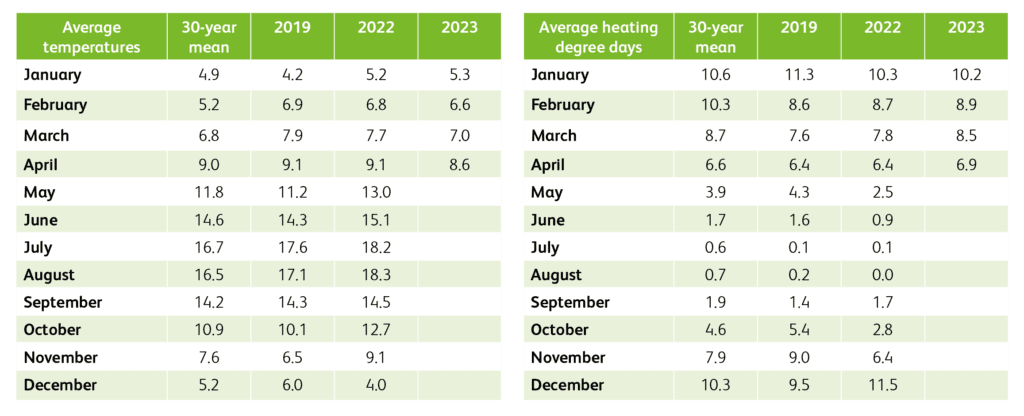
Heating oil
Consumption
March 2023 saw the highest consumption since February 2021.

Between April 2022 and March 2023, heating oil consumption in the UK, when compared to April 2019 to March 2020 (the last year pre pandemic), declined by 13%, mainly due to the high prices post the invasion of Ukraine, warmer weather and changing delivery patterns as a result of the cost-of-living crisis.
While the consumption reduction seen in 2022 continued into March 2023 compared to March 2020, this figure was materially impacted by the pandemic as residential customers started to work from home and made significant purchases.
Consumption between April 2022 to March 2023 was 12% below consumption between April 2018 and March 2019.

Pricing
The Office for National Statistics (ONS) recently produced its April monthly figures for domestic heating oil prices alongside broader inflation numbers.
Heating oil prices in April 2023 were 68.5ppl compared to 96.1 ppl in April 2022. This is the lowest price since February 2022 (69.5ppl), against a peak of 110.9ppl in June 22.
The headline Consumer Prices Index (CPI) rose by 8.7% in the 12 months to April 2023, down from 10.1% in March. However, the headline masks that Core CPI inflation (excluding energy, food, alcohol and tobacco) rose by 6.8% in year to April 2023, up from 6.2% in March – the highest rate since March 1992.
CPI annual inflation rate for housing, water, electricity, gas and other fuels was 12.3% in April 2023, down from a peak of 26.7% in January 2023 and from a rise of 26.1% in March 2023.
This fall is largely because of the upward contribution from the higher April 2022 Office of Gas and Electricity Markets (Ofgem) energy cap dropping out of the annual estimates.
• Gas prices fell by 1.0% between March and April 2023, compared with a rise of 66.8% between the same two months in 2022. (First time since October 2020 that monthly gas prices have fallen).
• Electricity prices fell by 1.1% between March and April 2023, compared with a rise of 40.5% between the same two months in 2022.
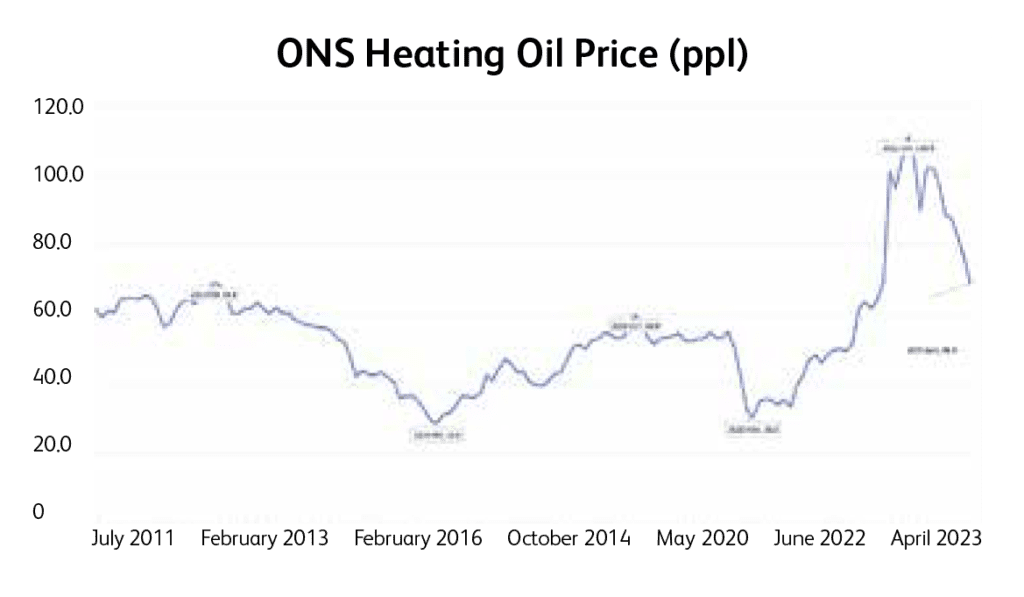
Gas oil and DERV
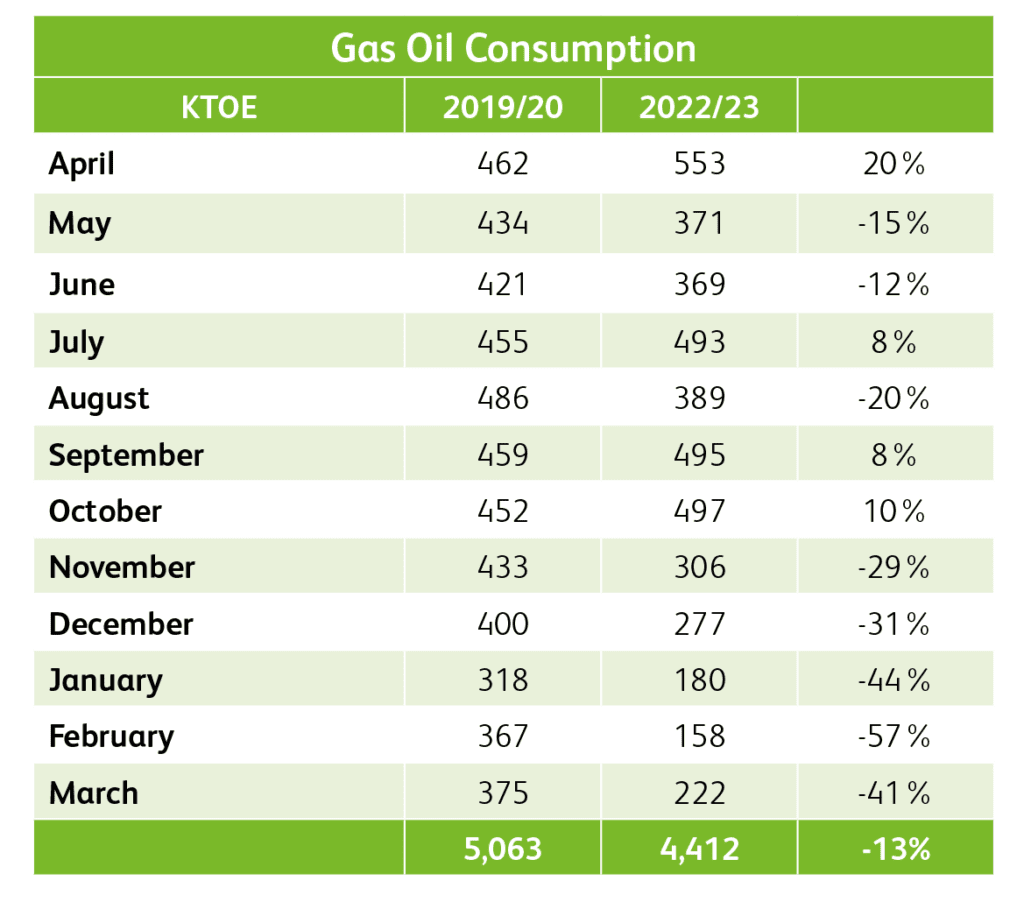
Gas Oil Consumption
Between April 2022 and March 2023, Gasoil consumption in the UK, when compared to April 2019 to March 2020 (the last year pre pandemic and prior to the duty changes), declined by 13%.
However, the overall number masks a significant decline in the last 5 months.

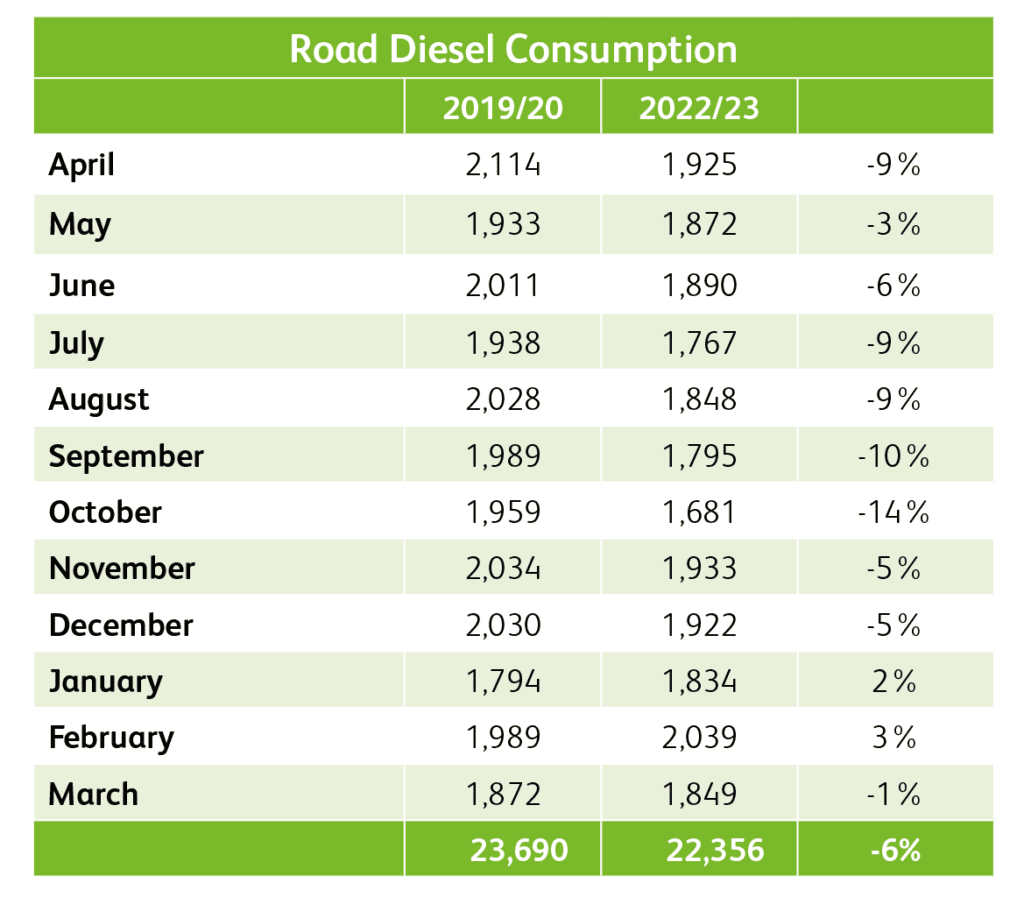
Derv Consumption
Road Diesel consumption is still about 6% off 2019 levels.
Demand for all transport fuels increased, with petrol and diesel up by 7.1 and 8.7 per cent, respectively, and demand for jet fuel up by 40 per cent compared to last year.
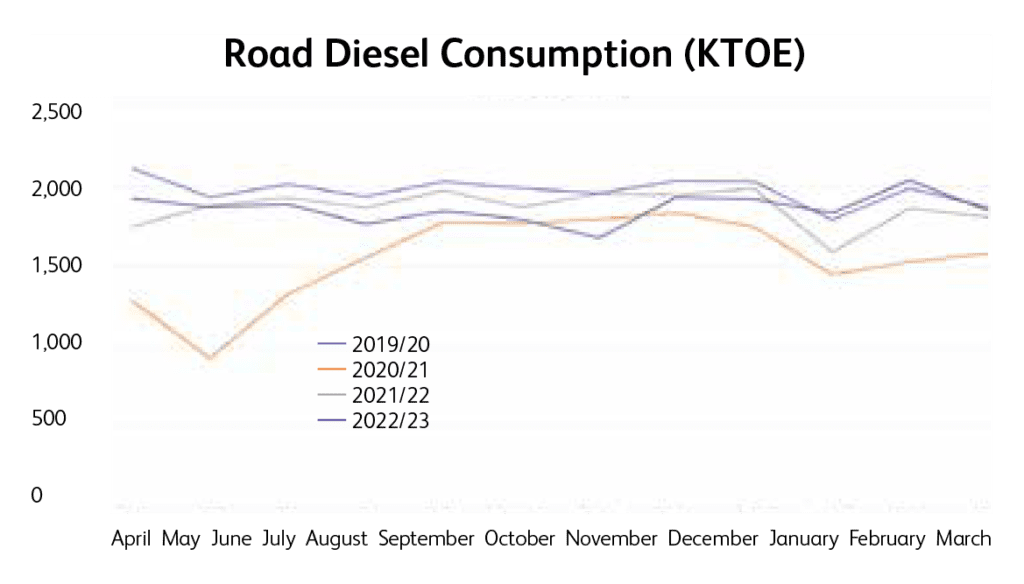
Pricing
The ONS’ recent inflation figures reported Motor fuel prices fell by 1.3% between March 2023 and April 2023, compared with a 1.9% increase in the equivalent time period last year. Average petrol and diesel prices stood at 145.8 and 162.4 pence per litre, respectively in April 2023, compared with 161.8 and 176.1 pence per litre in April 2022.
OFGEM Price Cap
Ofgem has recently announced a new price cap for the 3-month period starting July 1.
The normal figure publicised is the cap expressed as an average home (this is a 3-bedroom semi with electricity consumption of 2900 kWh and gas consumption of 12000 kWh).
The price cap has been set at £2074. This compares to the current price cap of £3280 which was reduced to £2500 by government action. So, consumers will see roughly a 17% reduction in average bills.
Customers that use oil for heating are highly likely to be significantly above the “average” price cap level as their homes tend to be larger and detached.

It is therefore important to put some context to these numbers, in particular against the cost of electricity on a per unit basis given this would be the alternative in terms of heat pumps:
The electricity prices above do not include the daily standing charge which is likely to add £110 to an average yearly bill.
Most predictions do not see prices falling significantly in the short term and the CEO of OFGEM commented, “In the medium term, we’re unlikely to see prices return to the levels we saw before the energy crisis.”
In addition, OFGEM has also increased the profit margin (earnings before interest and tax) for October bills to £37 per average bill (an increase of £10). This equates to around 2.4% of the price cap level.
